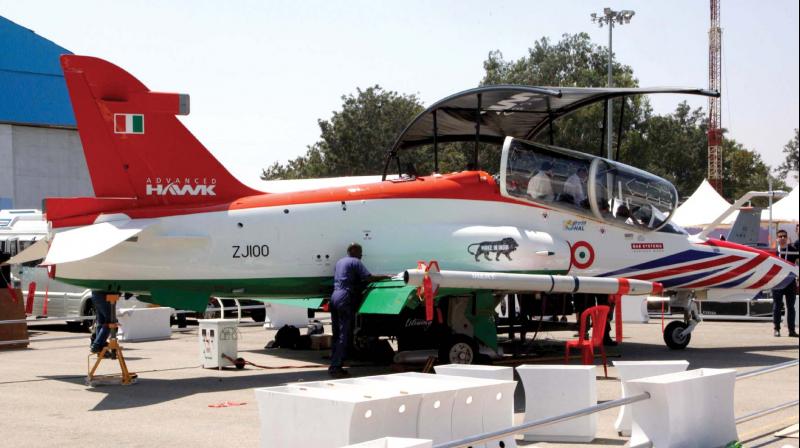Aviation industry buzzes with green alternatives

BENGALURU: With pollution becoming one of the major concerns in the aerospace sector, green technologies are emerging as one of the new areas that aircraft makers are concentrating on.
High noise levels from aircraft, carbon dioxide emissions and industrial pollution arising out of aircraft maintenance are the next vista of research and the next big bucks opportunity. Many of these technologies are set to be showcased at Aero India 2017 in Bengaluru.
Honeywell, which is one of the biggies taking part in the Yelahanka air show, has signed a contract with European Clean Sky 2 Joint Undertaking to address these issues: High noise levels and carbon dioxide emissions. The research is likely to come up with emission standards for aircraft. The take for Honeywell - 35 million euros.
As a core partner of the Clean Sky initiative, Honeywell will initiate projects to develop key technologies from cockpit solutions to health monitoring. It will also use the funding to advance its electromechanical actuators, which help improve aircraft performance and cut operating costs.
Aerospace is one of the most innovative and ever-changing industries. Consumer demands for more transportation are causing a change to the entire aircraft to fit more passengers, while trying to decrease fuel usage. Particularly, composites are being used for the body of the aircraft. Composites, such as Carbon Fiber Reinforced Plastic (CFRP) are used as a stack up or layup in conjunction with a metal, commonly titanium. These not only make the plane lighter and reduce emissions, but improve their durability.
The research leaders in this area are Boeing, Airbus, Toyota, Saint Gobain, Mitsubishi, Nippon Glass Fibre, Honda and GM. The business is likely to be about 8 billion dollars over the next ten years.
The next major area in aerospace research is fuel. Energy consumption in the world transport sector accounted for approximately 2,300 Mtoe (million tons of oil equivalent) in 2009, with global aviation consuming 10 per cent of it.
With hydrocarbons a finite source, and also a highly polluting one, Aerospace majors are looking for options. Traditional jet fuel is a hydrocarbon, almost exclusively obtained from the kerosene fraction of crude oil. Two types of fuels are used in commercial aviation: Jet-A and Jet A-1. Fuel specifications for aviation fuels are very stringent. For aviation, advanced liquid biofuels are the only low-CO2 option for substituting kerosene, as they have a high specific energy content.
A grip on Gripen for IAF, Navy pilots
Sweden’s SAAB, which has offered to roll out Gripen E combat jets in India, will give a dozen test pilots of the IAF and Navy a feel of the aircraft’s controls, its agility and even simulate air-to-air and air-to-ground attacks during test sorties at Aero India 2017.
“We’ve specific software which gives us the capability to demonstrate all operations without giving away our secrets. It’s (aircraft) rapid but safe and my colleague nicknamed ‘Bulan’ (Andre’ Pranstrom) will give a whole new dimension to aerobatics with his manoeuvres at the air show,” says Jonas Jakobsson, experimental test pilot, SAAB.
He said that though his colleague has no plans to demonstrate a signature manoeuvre like the cobra-strike of Sukhoi-MKI, he would put the combat jet through plenty of breath-taking dives, turns and climbs, including one nine “G” spin.
On his mission at Aero India 2017, Jonas Jakobsson, who like ‘Bulan’ has 1,000-odd hours of flying to his credit, told DC that he would be on hand to explain every aspect of the ‘Smart’ Gripen.

